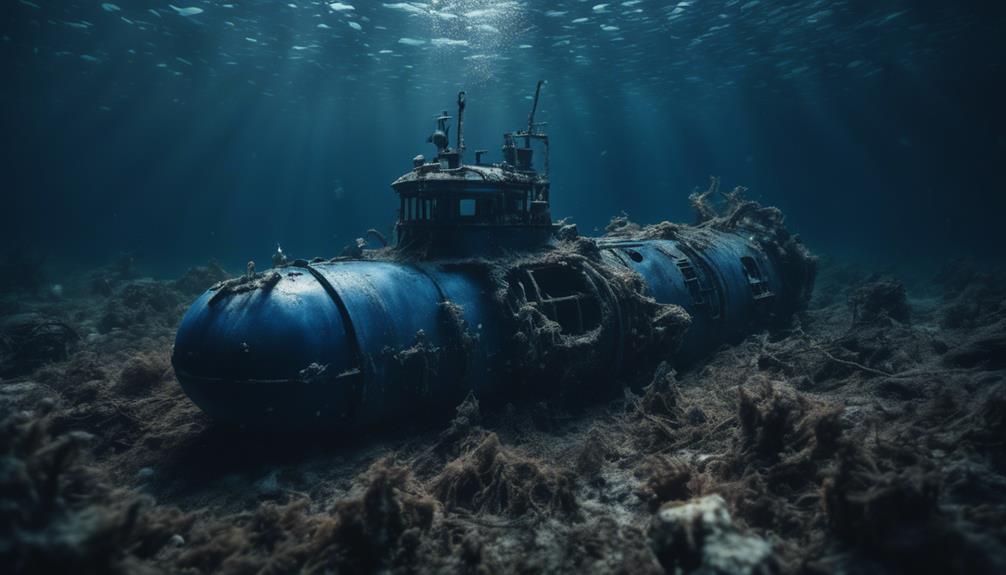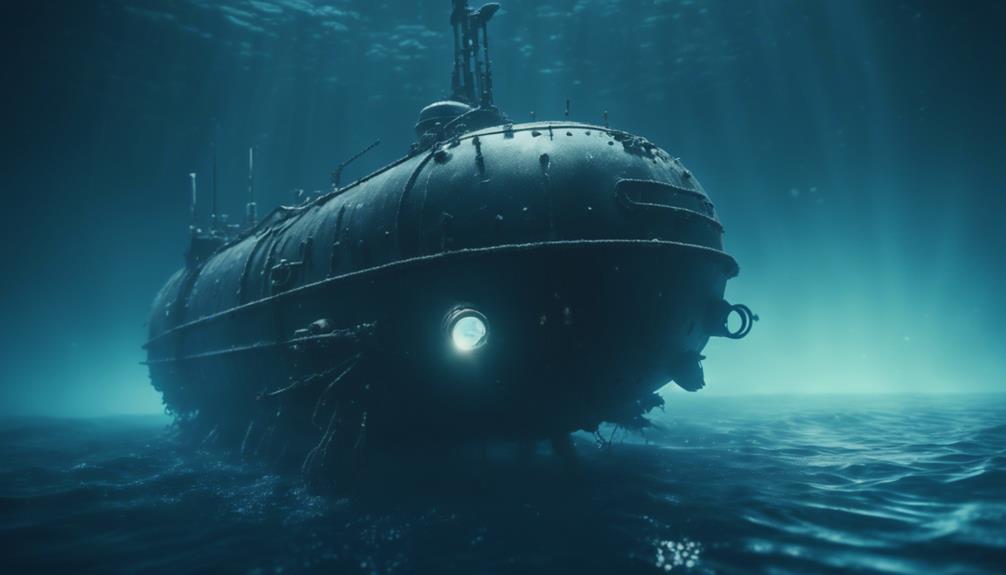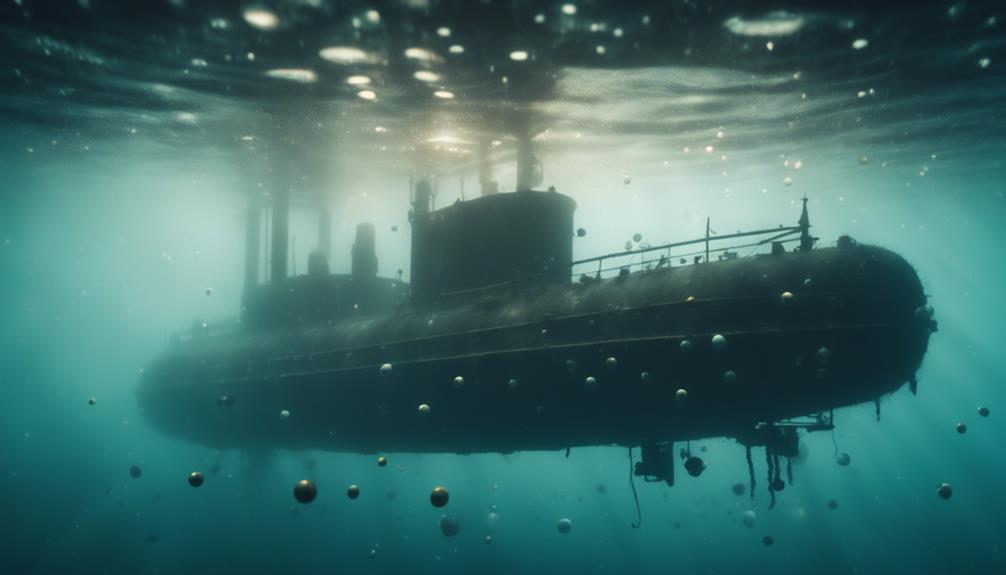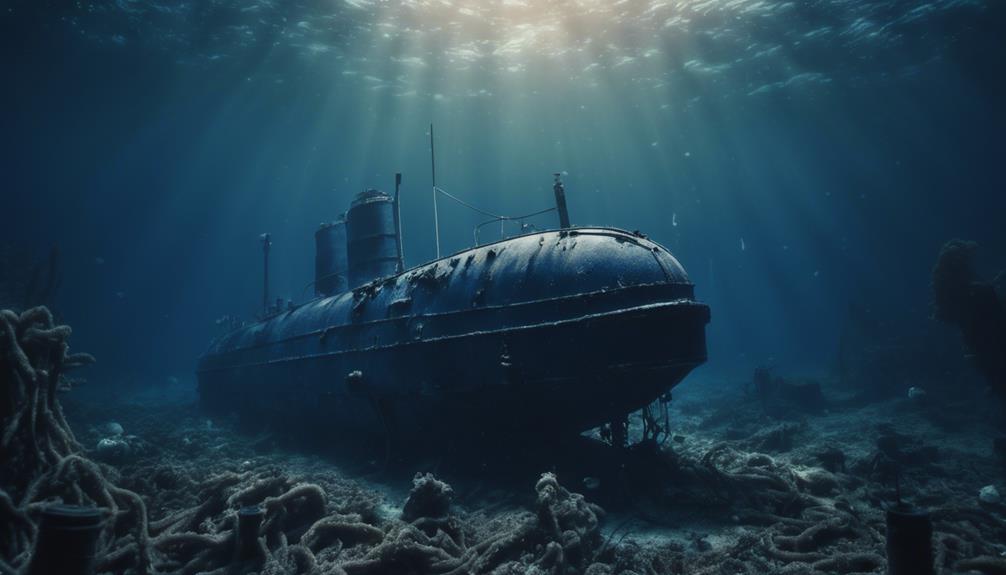On June 18, tragedy struck when the submersible Titan, piloted by OceanGate CEO Stockton Rush, imploded during a dive to the RMS Titanic wreckage, killing all five passengers on board, including billionaire Hamish Harding's stepson Suleman Dawood. Despite knowing the treacherous conditions, Dawood made the defiant choice to join the mission. The submersible faced extreme pressure and temperatures, and experts question the safety protocols in place. As the ocean exploration community mourns, Dr. Maria Rodriguez stresses the importance of learning from this tragedy. As the investigation unfolds, a deeper understanding of the incident and its implications will come to light.
Key Takeaways
• The Titan submersible imploded while exploring the RMS Titanic wreckage, killing all 5 passengers, including billionaire Hamish Harding.
• Hamish Harding, a British billionaire, was a mission specialist on the doomed submersible expedition.
• Shahzada Dawood, a victim of the tragedy, is the father of Suleman Dawood, the stepson being referred to in the Google query.
• The submersible was piloted by Stockton Rush, CEO of OceanGate, who also lost his life in the disaster.
• The incident has sparked a thorough investigation into the safety protocols and emergency preparedness of deep-sea expeditions.
Submersible Disaster Unfolds
On June 18, the 21-foot submersible named Titan suddenly lost contact with the Canadian Research Vessel Polar Prince, sparking a desperate search and rescue operation that would ultimately end in tragedy.
The submersible was part of an OceanGate Expeditions tour to explore the RMS Titanic wreckage. According to survivor accounts, the Titan submersible suffered a catastrophic implosion, killing all five passengers on board.
The U.S. Coast Guard led the investigation, providing updates on the rescue efforts. As the search operation unfolded, officials revealed that the submersible's implosion was likely caused by excessive pressure at the depths of the ocean.
Investigation updates confirmed that the crew members were experienced explorers with a deep love for the ocean, but their passion ultimately led to this tragic event.
Notable Figures on Board

Five experienced and passionate explorers, including the CEO of OceanGate, were on board the Titan submersible when it suffered a catastrophic implosion. These individuals were dedicated to advancing ocean exploration initiatives and leaving a lasting legacy in their respective fields.
- Stockton Rush, CEO of OceanGate, piloted the Titan submersible and tragically lost his life in the implosion.
- Hamish Harding, a British billionaire and mission specialist, confirmed his participation in the mission before the submersible disappeared.
- French explorer Paul-Henri Nargeolet, a maritime expert and Titanic specialist, also lost his life in the implosion.
- Shahzada Dawood and his son Suleman Dawood were among the victims of the tragic implosion.
Tragic Implosion Aftermath

Following the devastating implosion of the Titan submersible, the ocean exploration community was left reeling in shock and grief. The tragedy has sparked a flurry of questions regarding the safety protocols in place for deep-sea expeditions.
Survivor stories from similar incidents have highlighted the importance of rigorous safety checks and emergency preparedness. In the aftermath of the implosion, experts are calling for a thorough investigation into the incident to identify areas for improvement in safety protocols.
"This tragedy is a stark reminder of the risks involved in deep-sea exploration," said Dr. Maria Rodriguez, a marine biologist. "We must learn from this incident to prevent such tragedies in the future."
Mission to Explore Titanic

As OceanGate Expeditions' Titan submersible set out on its ill-fated mission to investigate the RMS Titanic wreckage, the crew's sense of adventure and discovery was palpable. The expedition aimed to explore the depths of the North Atlantic Ocean, where the Titanic lay, to uncover its mysteries and pay respects to the victims. However, the mission wasn't without its challenges.
- Harsh Environment: The submersible had to withstand extreme pressure and near-freezing temperatures at a depth of 12,500 feet.
- Limited Visibility: The darkness and turbidity of the ocean floor made navigation and communication difficult.
- Technical Complexity: The submersible required sophisticated equipment and precise engineering to operate safely.
- Human Factors: The crew had to contend with fatigue, stress, and the psychological impact of exploring a tragic site.
OceanGate's response to these challenges was to prepare the crew with rigorous training and to design the submersible with multiple safety features.
Lasting Legacy of Victims

The tragic loss of the Titan submersible's crew has left an indelible mark on the world of oceanic exploration, and their passion for discovery will continue to inspire future generations.
The legacy impact of the victims will be felt for years to come, as their contributions to the field of oceanography and exploration are remembered and honored. Remembrance ceremonies will be held to pay tribute to the crew, celebrating their achievements and sacrifices.
Their families, friends, and colleagues will continue to carry on their legacy, ensuring that their work and dedication to oceanic exploration aren't forgotten. As Stockton Rush, CEO of OceanGate, once said, 'The ocean has a way of humbling us, but it's also a reminder of our place in the universe.'
Frequently Asked Questions
Was the Titan Submersible Adequately Inspected Before the Dive?
The Titan submersible's pre-dive inspection is under scrutiny. Regulatory oversight is key in ensuring safety protocols are met. OceanGate Expeditions, the company behind the doomed dive, maintains that the Titan underwent thorough maintenance and inspections.
However, maintenance records haven't been publicly disclosed, raising concerns about transparency. As the investigation unfolds, it remains to be seen whether the Titan submersible was adequately inspected before the dive, and what role, if any, regulatory bodies played in the tragedy.
What Safety Protocols Were in Place for the Oceangate Expedition?
OceanGate Expeditions, the company behind the ill-fated Titanic submersible dive, had safety protocols in place, including strict adherence to submersible regulations and thorough emergency preparedness plans. According to CEO Stockton Rush, 'our protocols are crafted to guarantee the safety of our passengers and crew.'
These protocols include regular submersible inspections, crew training, and emergency response plans, which are vital components of the company's safety management system.
Were There Any Warning Signs Before the Catastrophic Implosion?
As investigators explore the Titanic submersible tragedy, they're scrutinizing potential warning signs preceding the catastrophic implosion. Human error and equipment failure are being examined as possible contributors to the disaster.
Hamish Harding, a mission specialist on the ill-fated expedition, had expressed concerns about the submersible's condition, citing 'a few issues' during a pre-dive interview. This raises questions about whether these concerns were adequately addressed before the dive.
How Will Oceangate Expeditions Recover From This Tragic Incident?
OceanGate Expeditions faces significant financial ramifications and a potential blow to public perception following the catastrophic implosion of the Titan submersible. The company's reputation and credibility are at stake, as the incident raises questions about safety protocols and operational procedures.
According to Stockton Rush, CEO of OceanGate, the company will conduct a thorough investigation to determine the cause of the implosion and implement necessary changes to prevent such tragedies in the future.
Will There Be an Investigation Into the Cause of the Implosion?
An investigation into the cause of the implosion is likely, given the catastrophic nature of the incident. Regulatory oversight agencies will scrutinize OceanGate Expeditions' safety protocols and corporate accountability.
'We will leave no stone unturned to determine what went wrong,' said a Coast Guard spokesperson.
A thorough examination of the submersible's design, maintenance, and operational procedures will help identify the root cause of the tragedy, providing valuable lessons for the industry.
Conclusion
As the world grapples with the aftermath of the Titanic submersible tragedy, one question lingers: what drove Shahzada Dawood, a billionaire's stepson, to undertake this perilous journey?
Investigating the truth behind his motivations reveals a complex web of ambition, curiosity, and defiance. Dawood's decision to join the expedition wasn't just a thrill-seeking venture, but a calculated move to prove his mettle.
As OceanGate CEO Stockton Rush once said, "Exploration isn't just about the destination, but about pushing human limits." Dawood's choice, though ultimately tragic, was a validation of the human spirit's insatiable thirst for discovery.











